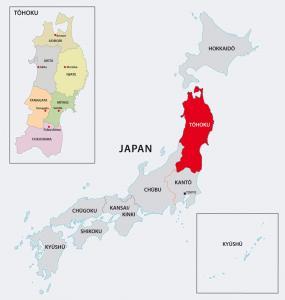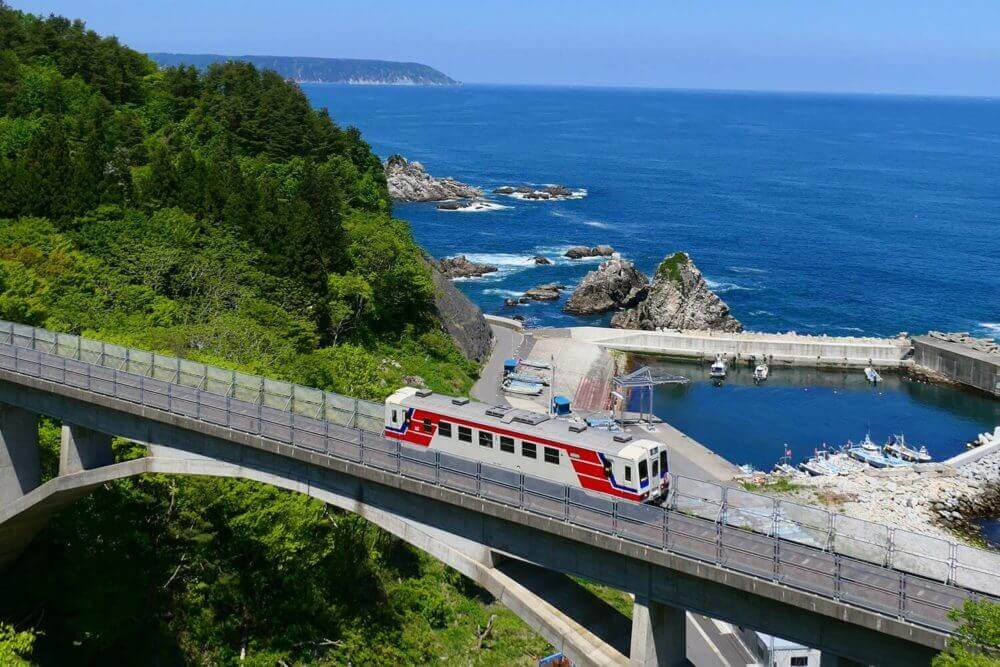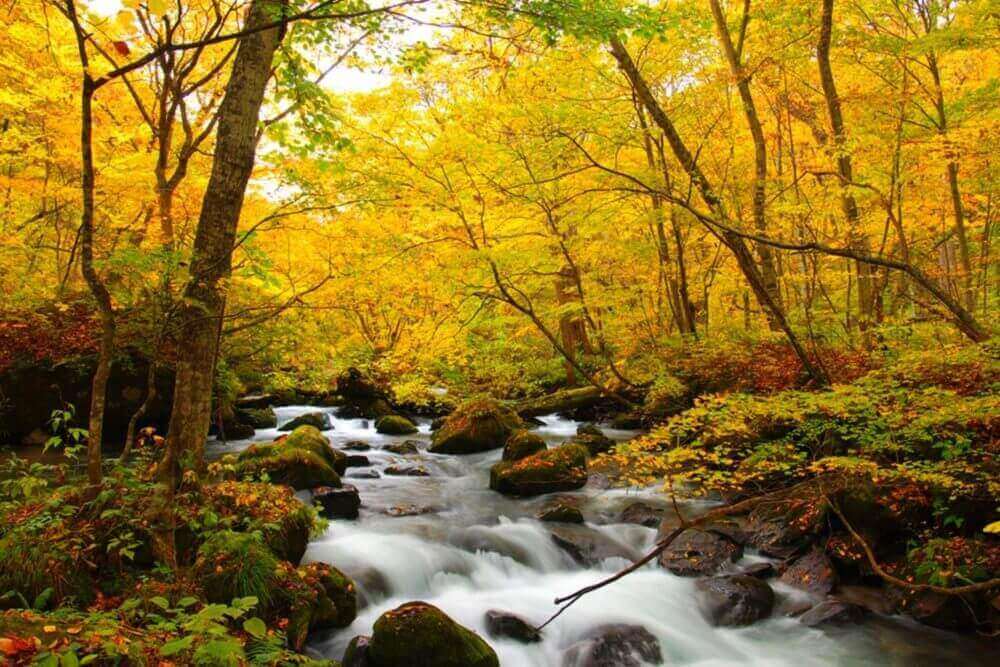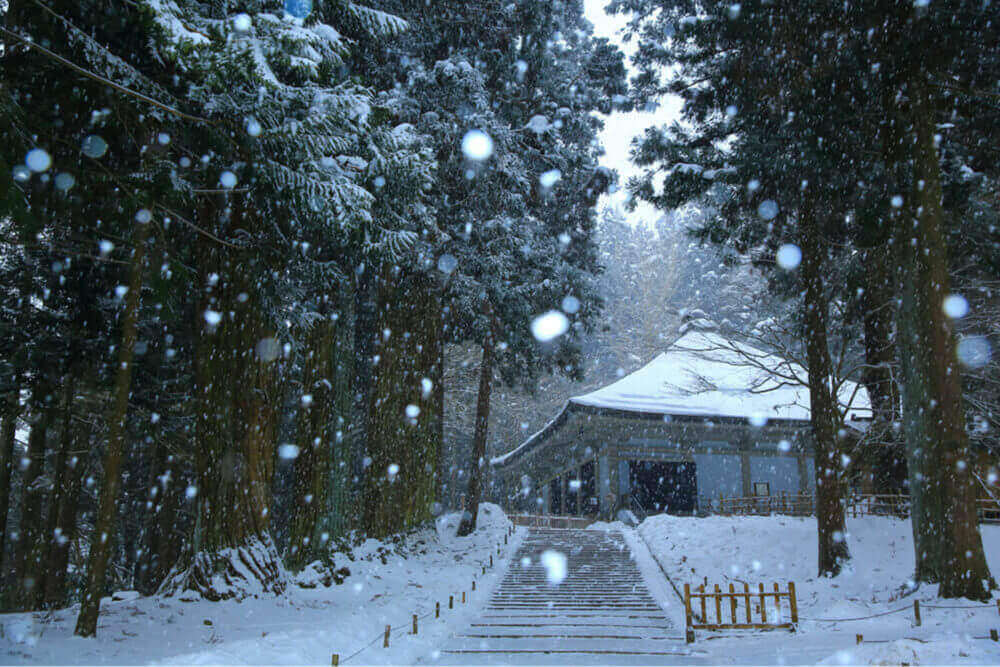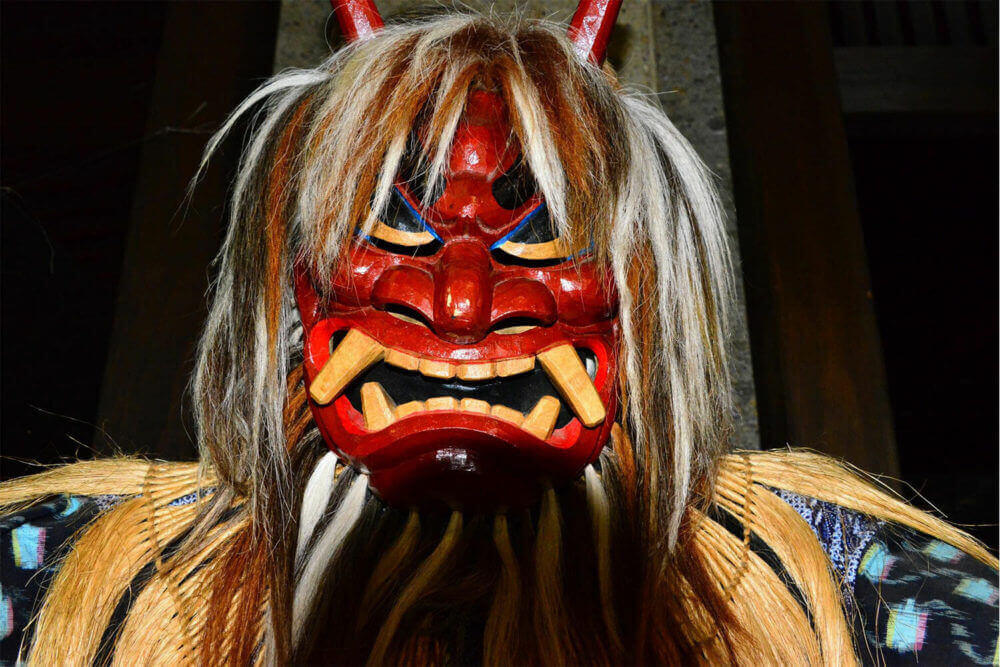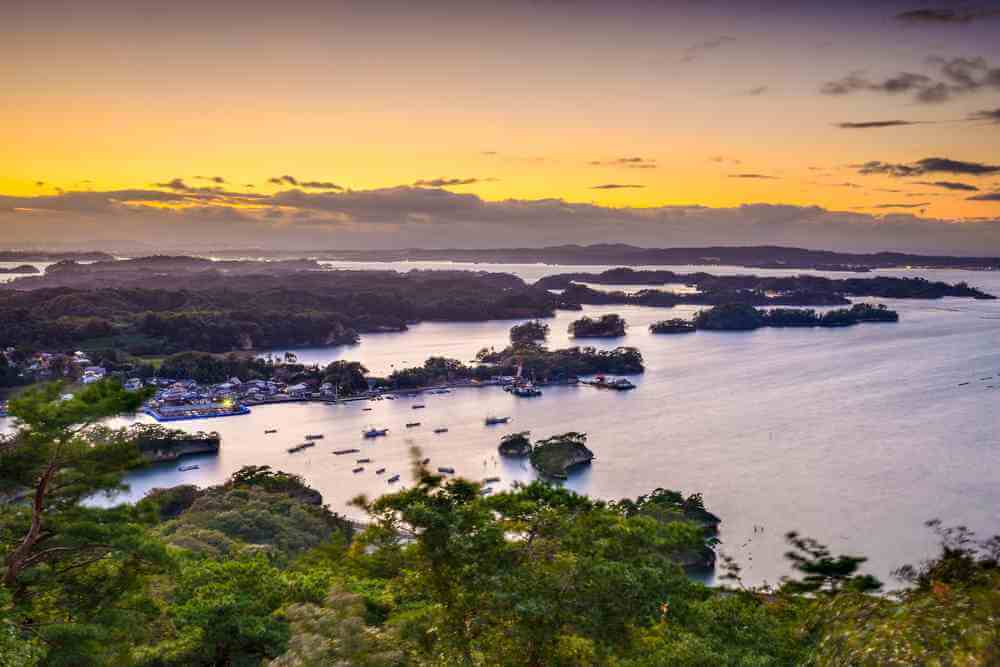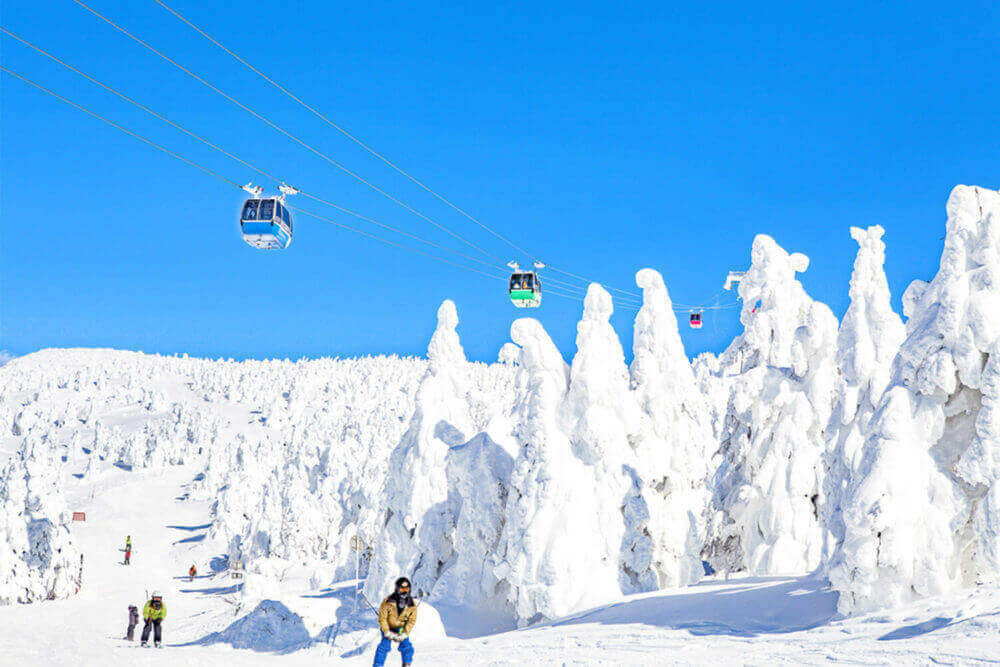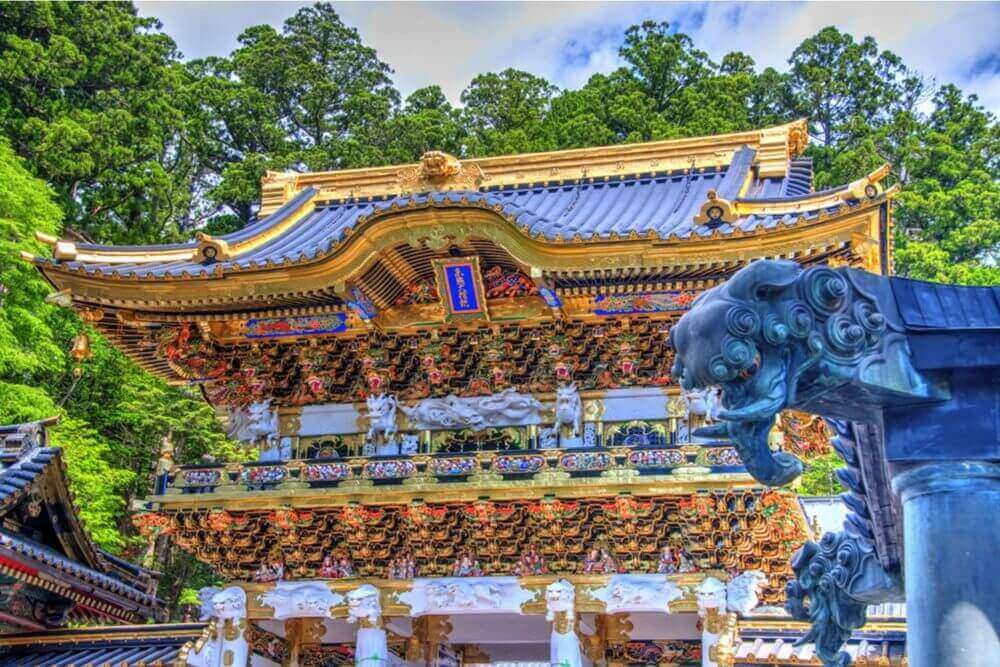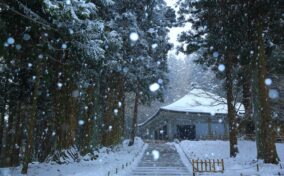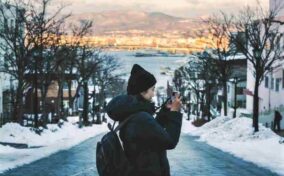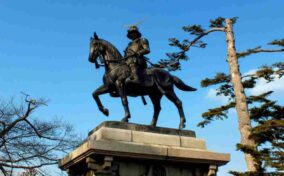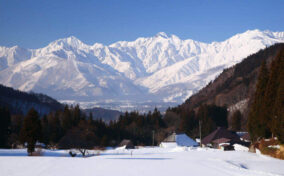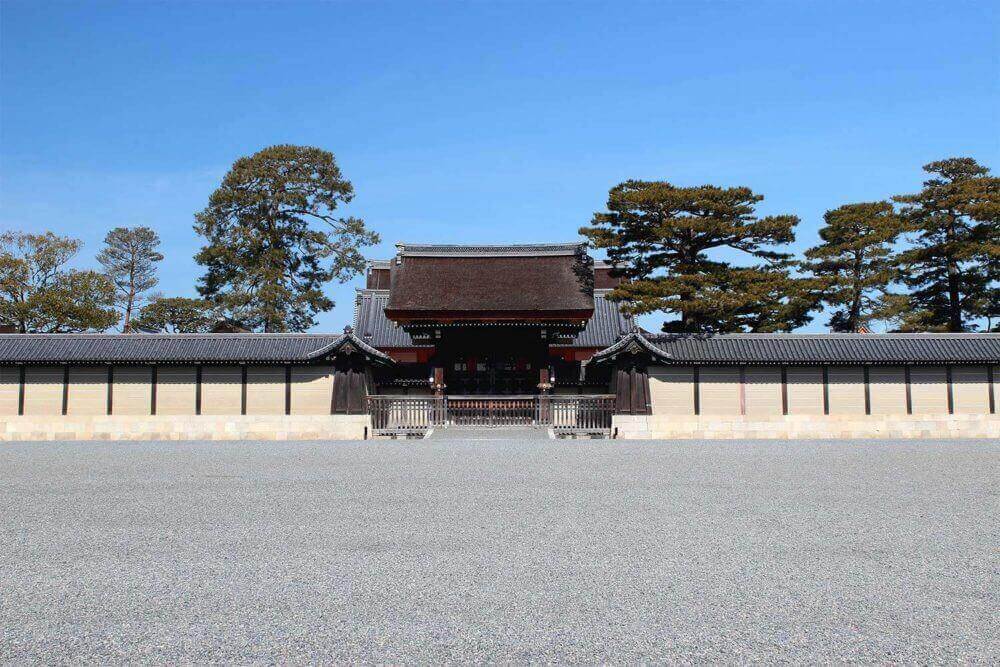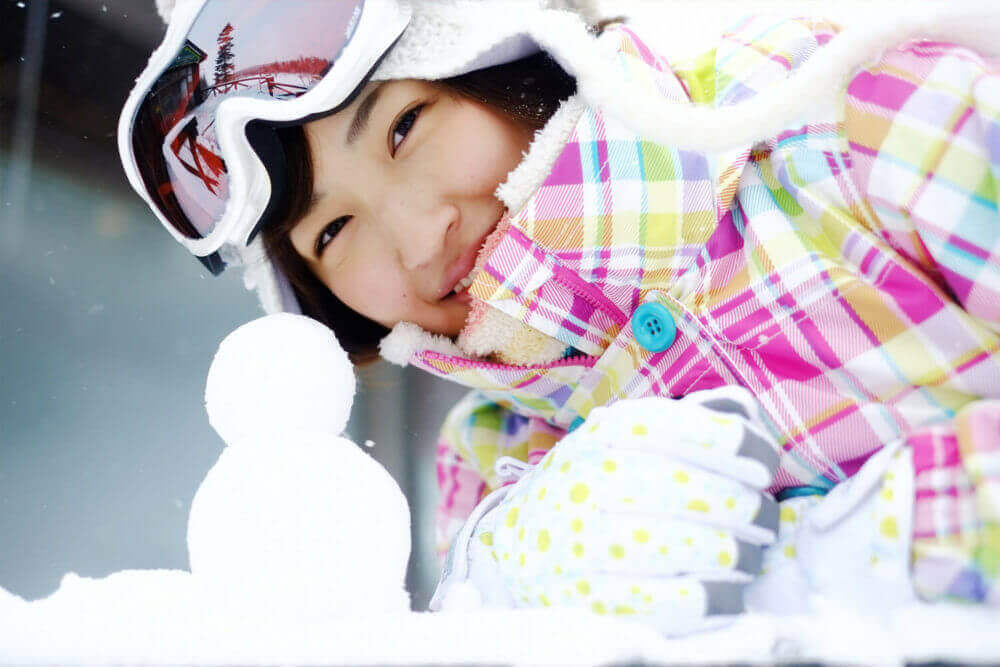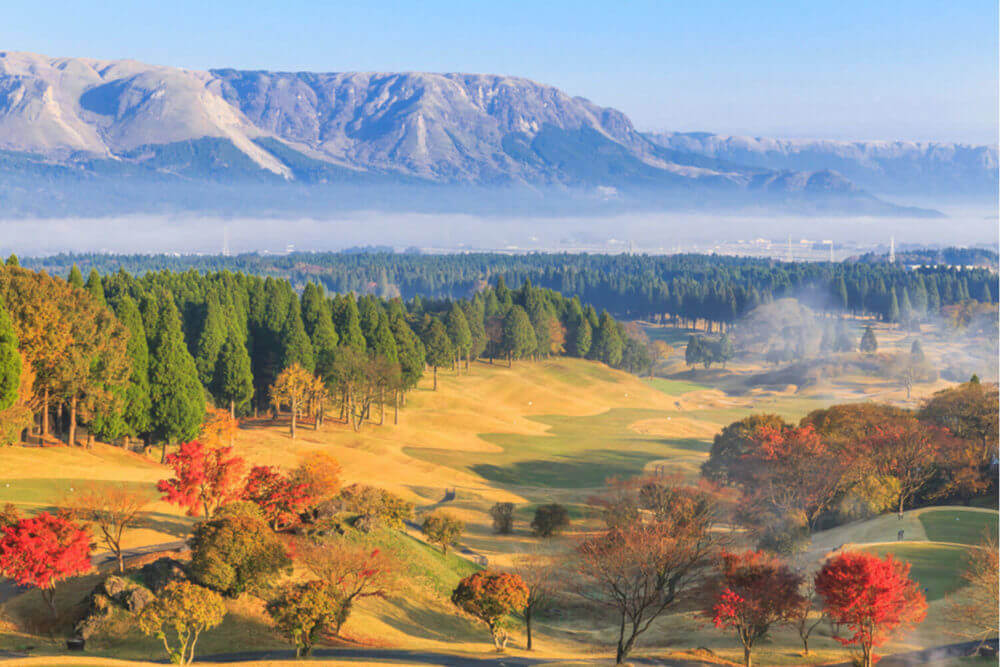In Northern Japan (the Tohoku region of Japan), winters are severe and snow falls frequently. People have patiently devised various ways to survive in this environment. Traveling in the Northern Japan, you can experience firsthand the lifestyle of the people of the Tōhoku region. I love traveling through the towns and cities of the Tohoku region in northern Japan. The scenery of Northern Japan is spectacular when the beautiful cherry blossoms begin to bloom. The traditional festivals held during the short summer and autumn foliage season are also worth seeing. Why don’t you travel to Northern Japan (Tohoku) too?
Table of Contents
Outline of Northern Japan (Tohoku Region)
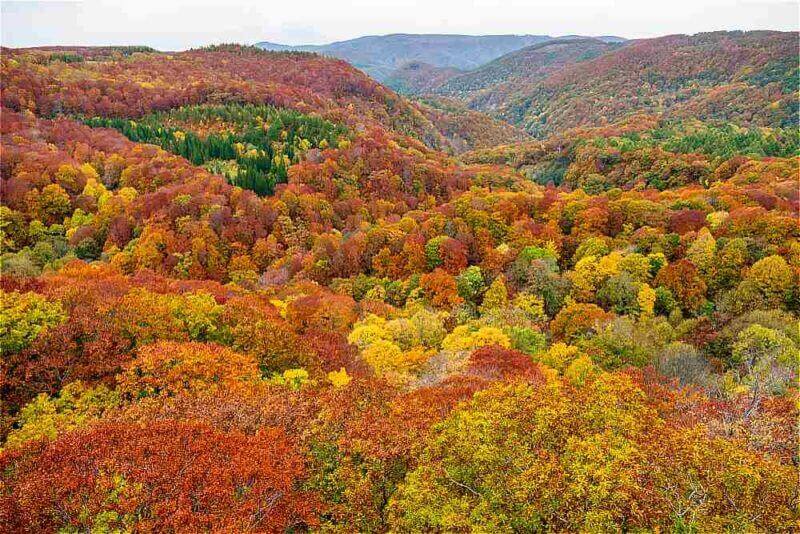
Colorful autumn trees on the Shirakami mountainous wide range with red, orange, and golden foliage in Aomori Tohoku Japan = shutterstock
Points
Amazing land comparable to Hokkaido
Recently Hokkaido’s popularity has increased considerably among foreign tourists. That’s nice. In contrast, the Tohoku region has not received much attention. I feel a bit sorry about that.
In the Tohoku region, you can enjoy wonderful views of winter and surprisingly beautiful nature just like Hokkaido.
At the same time, in the Tohoku region, traditional living from old days and fine wooden buildings are left. In Hokkaido, it is difficult to enjoy such a living culture unless you go to the indigenous Ainu settlement.
I would like many people to know the wonder of the Tohoku region as much as possible. In this district, you can discover the rich life culture cultivated by people in the wilderness comparable to Hokkaido.
Please feel the life culture in harsh environment
When traveling in Tohoku, please imagine the winter in the region. Because there is a tough winter, spring seems to shine. People really enjoy festivals in the summer. And autumn leaves are deeply felt.
People in the Tohoku region are very patient, because they live in a harsh environment. They take over the wisdom to survive from their ancestors and live by preserving the traditional lifestyle and culture. Focusing on that, you will experience a very deep journey.
Access to Northern Japan
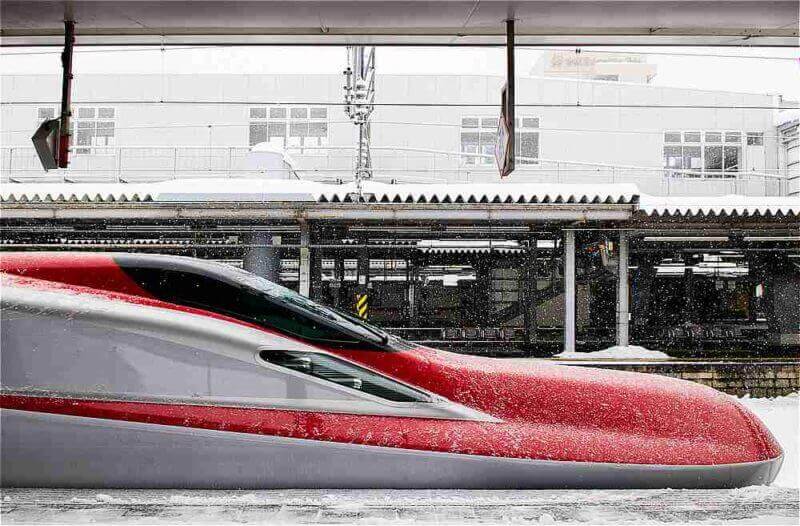
Komachi Super Express Shinkansen E6 series. Operated by JR East for Akita Shinkansen lines = shutterstock
The Tohoku region is so wide that it will take quite a while to move between cities. Basically, you should go to the airport near the destination and then take a bus or train from there to the destination.
However, in the Tohoku region, the JR Tohoku Shinkansen is operated. This bullet train runs from Tokyo station to Shin-Hakodate-Hokuto station in Southern Hokkaido through Fukushima station, Sendai station, Morioka station, Shin Aomori station and so on. To Yamagata, Yamagata Shinkansen can be used from Fukushima station. You can also use Akita Shinkansen from Morioka Station to Akita on the Japan Sea side. If you want to go along these Shinkansen line, you should use it. If you use the bullet train, for example, it is about 2 hours from Tokyo to Sendai, the central city in the Tohoku region.
If you want to travel around Tohoku towns, a rail pass that allows unlimited rides on the Shinkansen and local trains is a great deal. >>See here for details.
Climate and Weather in Northern Japan
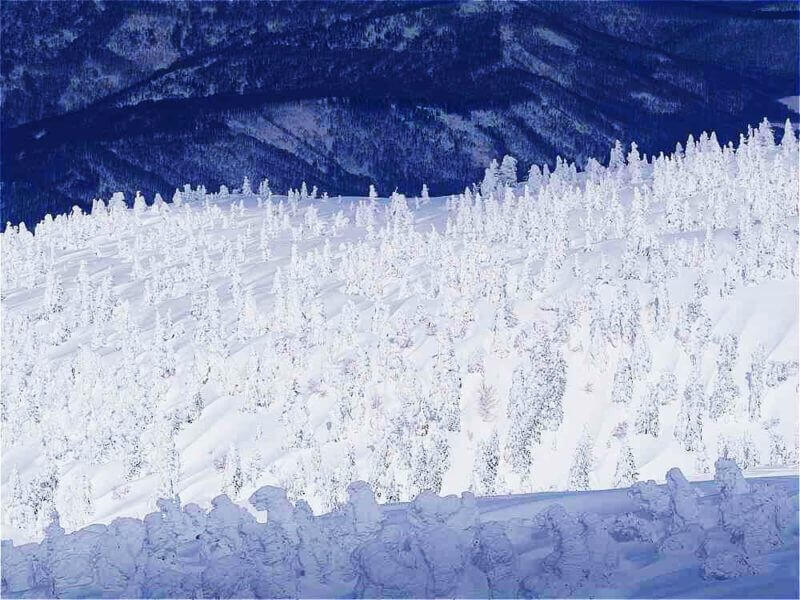
Landscape of Frost Covered Trees at Mt.Hakkoda, Aomori, Japan = shutterstock
The climate of the Tohoku region differs between the Japan Sea side and the Pacific side. In the center of the Tohoku region, the Ou Mountain Ranges are connected in the north and south. It is different between the Japan Sea side area on the west side of this Ou mountain range and the Pacific side area on the east side.
In the area on the side of the Sea of Japan, much snow falls in winter every year. This is because the moist air coming from the Sea of Japan will be blocked by the Ou Mountain Range and cause snow to fall. Sometimes snow falls horribly in mountainous areas. On the other hand, the air is relatively dry on the east side of the Ou Mountain Range. Snow may fall as the temperature is low, but there are many sunny days compared to the Japan Sea side.
However, in the Tohoku region there are many mountains besides the Ou Mountains. Therefore, the climate varies further depending on the area.
In the spring and autumn, the Tohoku region is a little cooler than Tokyo and Kyoto etc. However, summer will be as hot as it is. There are many basins in the Tohoku region, and the highest temperatures during the day are especially high in these basins.
Northern Japanu in winter, spring, summer, autumn
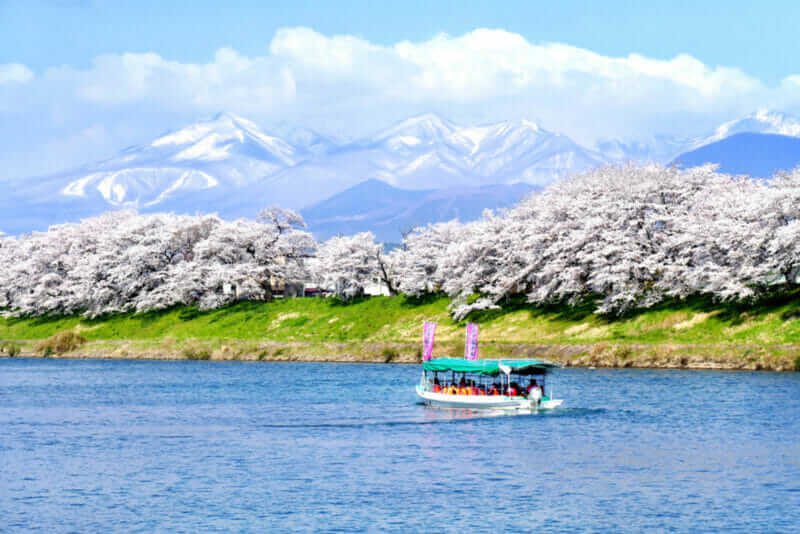
Tourist boat and rows of Cherry blossoms or sakura with the snow-covered Zao Mountain in the background along the bank of Shiroishi river in Miyagi prefecture, Japan = shutterstock
In the Tohoku region, the seasons change greatly. Winter is long and it is really cold. Spring will come later than Tokyo. In Tohoku district where many wild nature is left, various flowers bloom all at once at that time. And summer is hot anyway. In autumn the vast mountains are beautifully colored.
Tohoku in winter
If you travel in the Tohoku region in winter, I would recommend the area on the Japan Sea side where the snow falls heavily, or ski resorts in the mountainous area.
If you travel in the Tohoku region in winter, I would recommend the area on the Japan Sea side where the snow falls heavily, or ski resorts in the mountainous area.
On the side of the Sea of Japan, the sightseeing spots such as Yokote (Akita Prefecture) where the traditional cityscape remains, Nyuto Onsen (Akita Prefecture) where the snow scene is beautiful, and Ginzan Onsen (Yamagata Prefecture) also in the heavy snowy area are wonderful.
>> For details of Yokote, please see this article
>> For details of Nyuto Onsen and Ginzan Onsen, please refer to this article
In mountainous areas, especially Zao ski resort (Yamagata prefecture) is especially recommended.
>> For details of Zao, please see this article
Tohoku in spring
Spring in the Tohoku region starts with snow melting. And cherry blossoms will start to bloom later than Tokyo and Kyoto. Cherry blossoms bloom in mid-April to late in urban areas. It is even later in the mountain area.
Just as the winter is cold, the cherry blossoms in this region look more beautiful. I recommend you go to see cherry blossoms especially in Hirosaki Castle (Aomori Prefecture) and Hanamiyama Park (Fukushima Prefecture). The cherry blossoms in these sightseeing spots are much more authentic than big cities.
>> For details of Hirosaki Castle and Hanamiyama Park, please refer to this article
Tohoku in summer
In the Tohoku region, summer is unexpectedly hot. Especially in basins such as Akita prefecture and Yamagata prefecture, it is not unusual for the maximum temperature of the day to exceed 35 degrees Celsius. This point is very different from Hokkaido. In the Tohoku region, the four seasons in Japan are very clearly present.
During this hot summer, the traditional summer festival are held here and there in the Tohoku region. Tohoku people keep and enjoy these traditional events. If you go to Japan in the summer, why not try visiting Japan’s wonderful summer festival in the Tohoku region.
The summer festival I would like to recommend most is the Nebuta Festival in Aomori Prefecture. It is held in Aomori City and Hirosaki City in August. About this festival I introduced in the following article, so please drop in on this article if you do not mind.
>> For details of Nebuta Festival, please see this article
Tohoku in autumn
If you travel in the Tohoku region in autumn, rice grows bigger here and there, you will feel a very rich atmosphere. The Tohoku region is a rice-producing area representing Japan. Tohoku people harvest rice in autumn and thank God and Buddha for their grace.
If you go to the mountainous region of the Tohoku region, you can see more vivid red leaves. The sightseeing spot I particularly recommend is Oirase Stream (Aomori Prefecture). The autumn leaves here are particularly wonderful in Japan. As for the Oirase stream, I introduced in the following article, so please refer if you are interested.
>> For details of Oirase Stream, please refer to this article
Northern Japan local cuisines
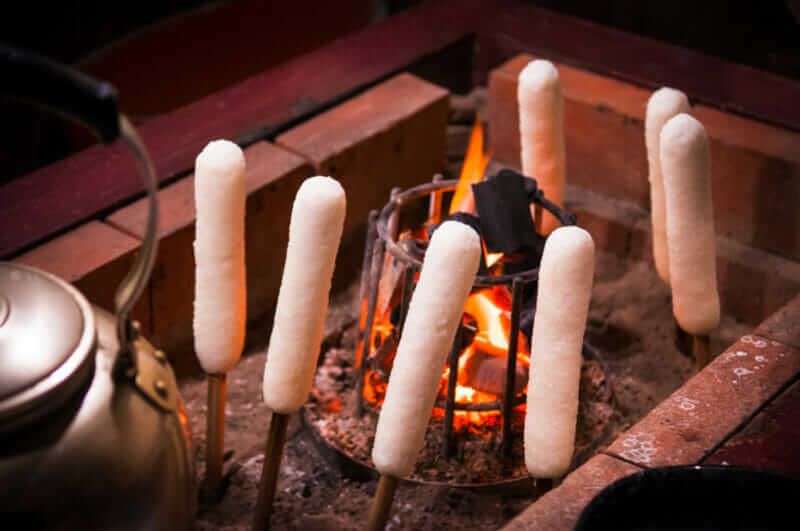
Charcoal grilled Kiritanpo (rice stick), Local food of Akita, Tohoku, Japan = shutterstock
Tohoku area has many traditional local cuisines. Please try these dishes on your visited land.
These local cuisines may be more rustic than the meals of modern restaurants in Tokyo. However, it will be a wonderful memory of your travel.
The regional cuisine I would like to recommend specifically is “Kiritanpo” in Akita Prefecture. It is a stick shaped cake made by grinding Freshly cooked rice as seen in the picture above. Please add this with miso and bake it. It is very fragrant and tasty. It is the best to put it in hot pot cooking!
East Japan great earthquake disaster
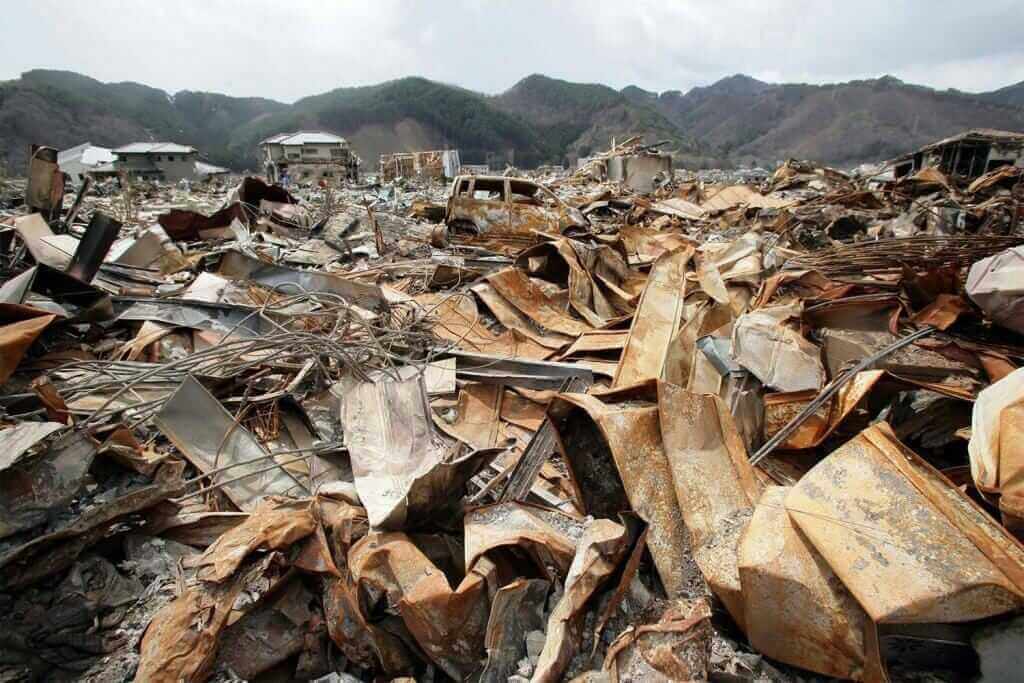
East Japan great earthquake disaster, March 11, 2011
In the Tohoku region, on March 11, 2011, the Great East Japan Great Earthquake occurred, and many people died. Currently, the people in the affected area are working hard to aim for reconstruction. People in Tohoku are very serious and patient. I wrote the following article about this big earthquake. Please drop in on this page if you like.
Northern japan places to visit
Welcome to Tohoku!
Now, please visit each area of the Tohoku region. Where would you like to go?
>>Find the best deal, compare prices, and read what other travelers have to say at Tripadvisor
Aomori Prefecture
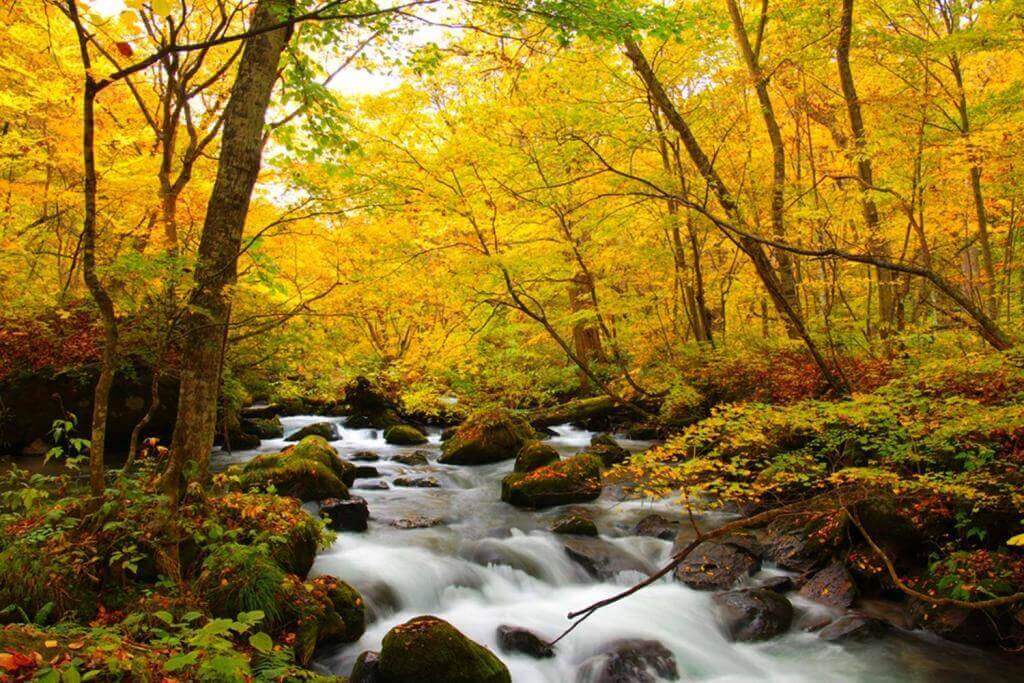
Autumn Colors of Oirase River, located at Aomori Prefecture Japan = Shutterstock
Aomori is the northernmost area of Tohoku district. There are truly rich nature here. Furthermore, the traditional festivals in this area are also wonderful.
Iwate Prefecture
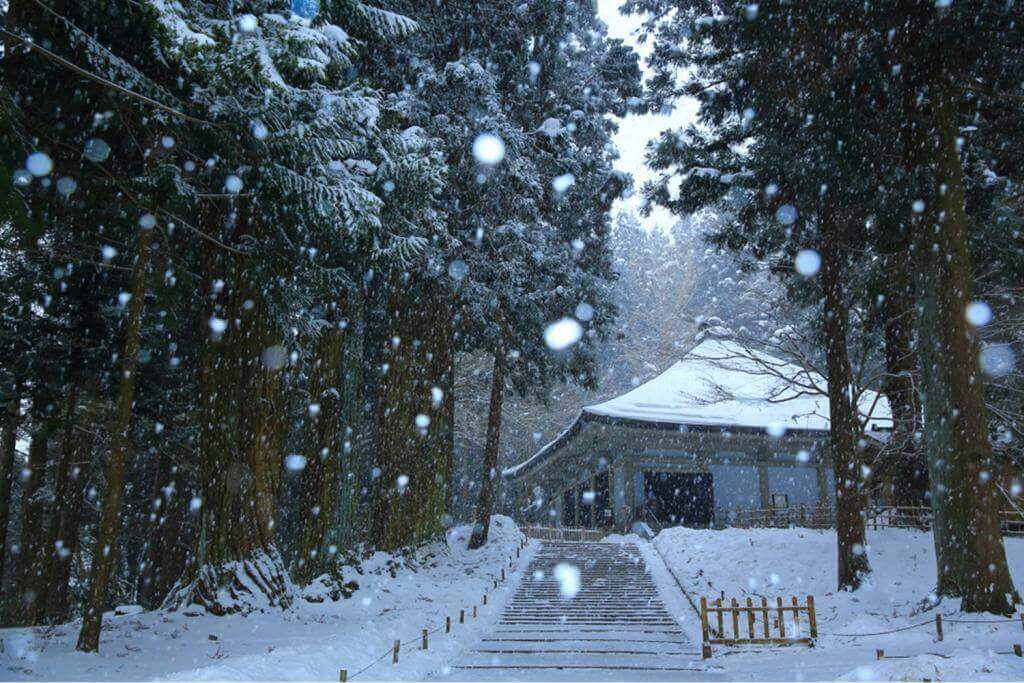
Chusonji Temple in winter = Shutterstock
In Iwate Prefecture there is a sightseeing spot called Hiraizumi registered as a World Heritage Site. There used to be a grand capital in the past. Marco Polo said “There is a golden country in the Far East.” It is said that it might have been about Hiraizumi.
Akita Prefecture
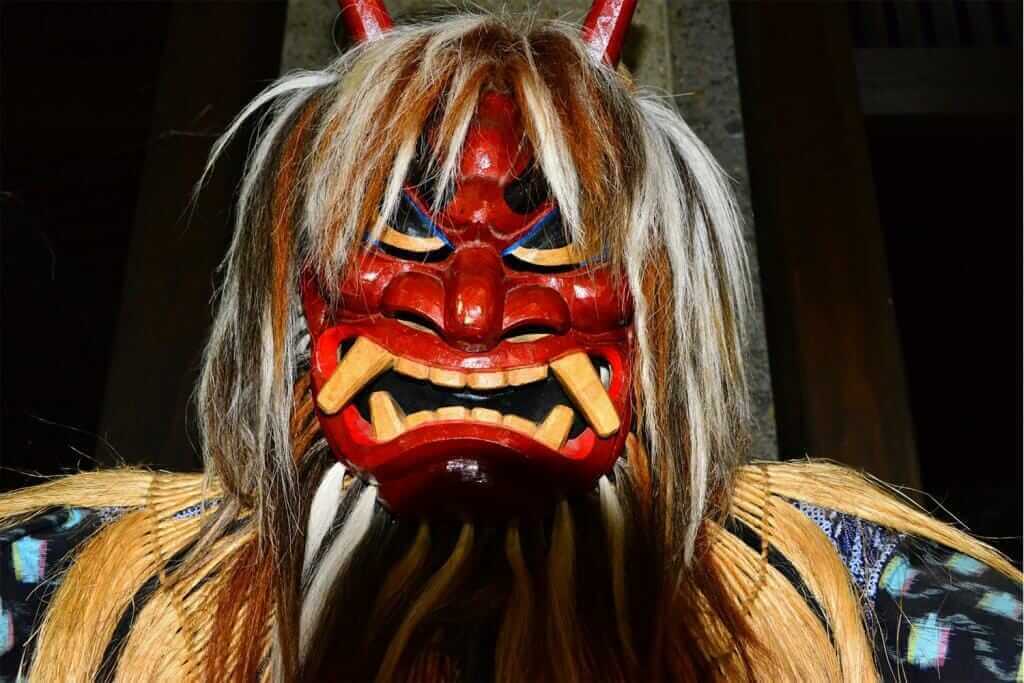
Namahage mask, traditional giant mask – ancient culture of Akita perfecture, Tohoku, Japan
Akita Prefecture is an area facing the Sea of Japan and many traditional events and regional cuisine from old times are left. If you go to this area, you may be able to time slip into Japan of an old age.
Miyagi Prefecture

Cherry trees in Matsushima , Mitagi Prefecture, Japan= Shutterstock
Located on the Pacific side, Miyagi Prefecture is the central area of the Tohoku region. The sea in this area is beautiful everywhere. Miyagi prefecture was greatly damaged by the Great East Japan Earthquake of 2011, but now people in this area are headed for reconstruction.
Yamagata Prefecture
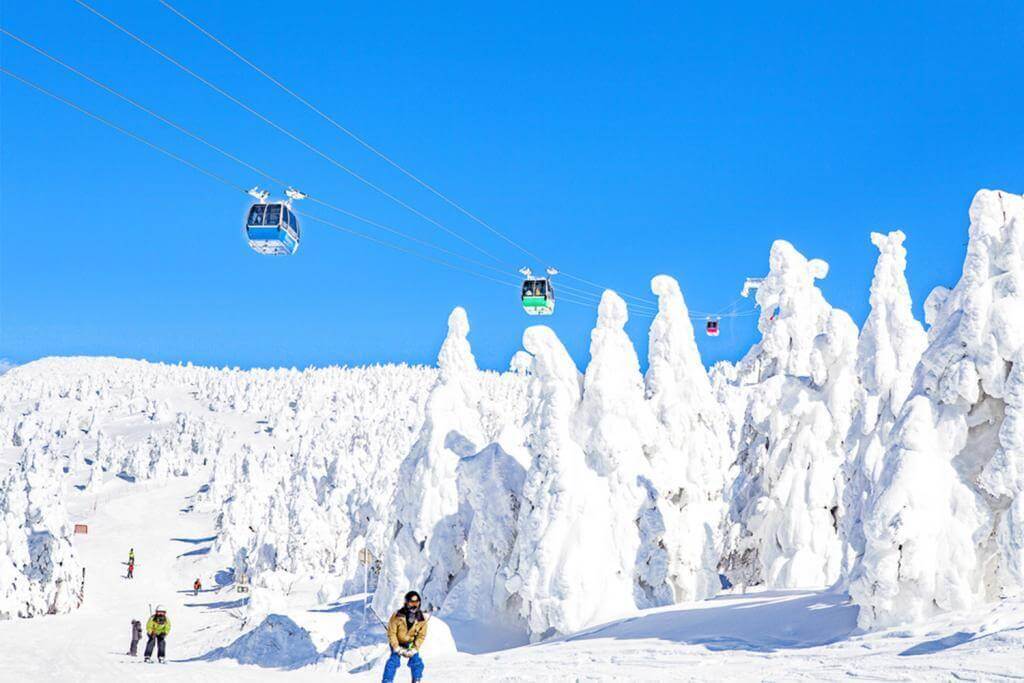
Beautiful Frozen Forest Covered With Powder Snow as Snow Monsters at Mount Zao Range, Zao, Yamagata , Japan = Shutterstock
If you go to Yamagata prefecture in winter, please visit Zao ski resort by all means. There are many snow monsters in this ski resort, as you can see in the picture above! You can appreciate them from within the gondola.
Fukushima Prefecture
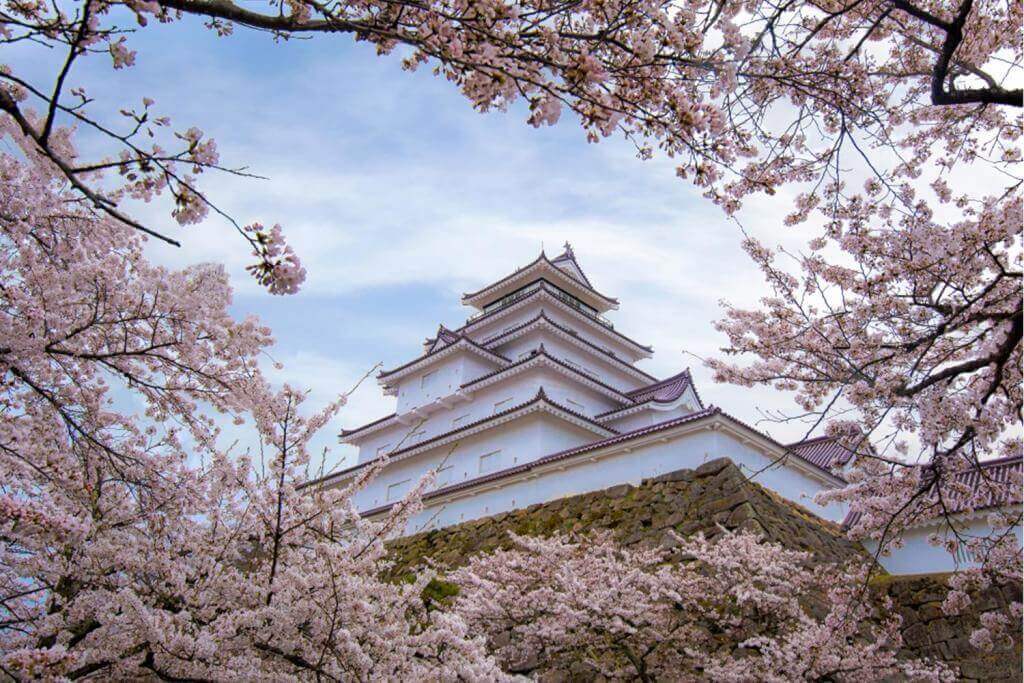
Tsuruga Castle or Aizuwakamatsu Castle surrounded by hundreds of sakura trees, Aizuwakamatsu, Fukushima Prefecture, Japan = Shutterstock
The name “FUKUSHIMA” became known all over the world due to the nuclear accident that occurred at the time of the Great East Japan Earthquake. At that time, a bad image spread, but real Fukushima is a wonderful place. In Aizuwakamatsu city you can enjoy spectacular scenery as seen in the photos above in the spring.
Thank you for reading to the end.
Now, let’s plan to make your vacation in Japan the best experience ever!
